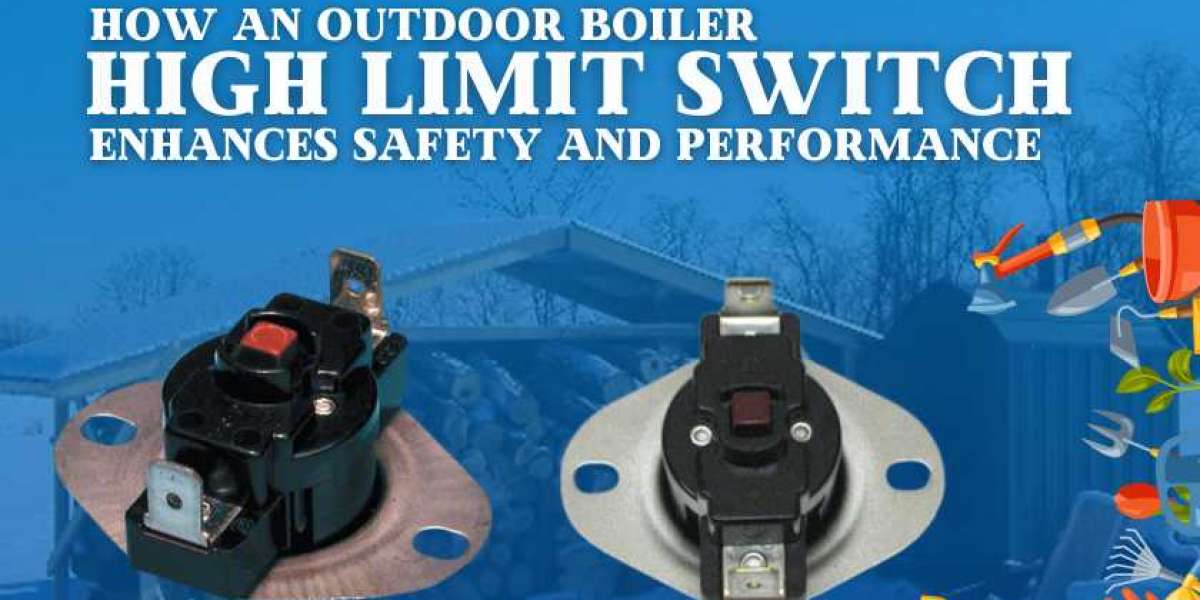Introduction
Outdoor boilers play an important role in home heating, especially in colder climates. They provide consistent warmth, especially to people off the grid or in rural areas. But with any heating system, they have their safety concerns as well. Perhaps one of the most vital safety features in these systems is the high limit switch. It's small, yet it's vital: The piece is critical to safety and performance in keeping your boiler running efficiently, and not overheating.
What is a High Limit Switch?
A high limit switch is a safety device commonly used within both furnaces and boilers to monitor the temperature inside the heating system. The main process of the operating system is to prevent attaining hazardous temperatures by turning off the burner in case the temperature starts getting too high. Think of it somewhat like a thermostat-but one actually designed for when things go wrong. High limit switch Engagement occurs in the event when the temperature of the boiler has exceeded safe limits to prevent overheating such that failure of the system or harm to the operator is avoided.
Types of High Limit Switches
Two main types of high limit switches can be used in a boiler or furnace system:
Manual Reset High Limit Switch
This type requires manual resetting of the switch after tripping. It is designed that way to ensure you find the cause of the overheating by inspecting the system before restarting.
Automatic Reset High Limit Switch
Unlike the manual version, this one automatically resets upon return of the temperature to normal levels. Conducive as it may be, this may cause many instances of overheating, unless the root problem is solved.
How a High Limit Switch Enhances Boiler Safety
The high limit switch is the first line of defense against overheating in the boiler. If a boiler operates at dangerously high temperatures, it will lead to damage of its components, systems failures, or even fire hazards. Here's how the high limit switch helps in maintaining safety:
1. Prevents Overheating
The switch cuts off the burner once the boiler reaches a particular temperature to avoid overheating and its consequent expensive repairs or even complete boiler failure.
2. Protects Other Components
Due to this high limit switch preventing excessive heat, the generation of heat which may reach the other system components such as pumps, seals, and heat exchangers is curtailed
3. Reduces the Risk of Boiler Failure
Prolonged running in high temperatures will cause severe damage to the boiler. This high limit switch ensures the system doesn't operate outside of a safe temperature range and, provided long-term failure can be avoided if not reduced.
High Limit Switch for Performance Optimization
Apart from safety, the boiler high limit switch develops the better performance of the system by sustaining an ideal temperature range:
Ensures Consistent Performance
The high limit switch maintains the temperature of the system accordingly to ensure that the boiler is running without fail and working efficiently at proper temperatures, rather than going haywire in wacky temperature variations.
Helps in Temperature Regulation
Operating at an ideal temperature, the boiler reaches the point of maximum efficiency in a specified temperature range, saving energy costs and consistent heating performance.
Common Issues with High Limit Switches
Like any component, high limit switches can run into issues. Some of the most common problems include:
Tripping Too Frequently
That would also imply that the temperature sensor is faulty or there is an inherent problem of air-vent blockage or a failure in the fans.
Faulty Sensor Readings
If it doesn't measure the temperature right, then it can lead to spurious tripping of the switch or may never trip even when required.
What Happens if the High Limit Switch Fails?
Failure of a high limit switch would lead to overheating of the boiler, which may cause severe damage or dangerous situations like fires. Some of the symptoms or evidence of a bad switch are irregular heating, turning of the system off too soon, or failure of the boiler to turn off at all.
Maintenance Tips for High-Limit Switches
To keep your high limit switch in good working condition, regular maintenance is essential. Here’s what you should do:
- Regular Inspection: Check the switch periodically to ensure it’s free from dust and debris.
- Cleaning and Resetting: If you have a manual reset switch, ensure it’s cleaned and reset properly after each use.
When to Replace Your High Limit Switch
Limit switches do have a limited lifetime and can wear out with time. Following are some indications that replacement time has arrived:
- The breaker is also tripping too much, even when the system has reached a normal temperature.
- Visual wear and tear on the switch itself.
- The system does not reach satisfactory heat levels.
Why You Should Invest in a Quality High Limit Switch
High limit switches are usually standard in most boilers. Buying a high-quality one will, however, tend to make more financial sense over a longer period. Here’s why:
- Long-Term Cost Savings: Due to the dependability of a good switch which will not frequently break down and therefore save repair expenses..
- Enhanced Boiler Performance: A reliable switch will give repeatable, safe operation, and help extend the life of your boiler.
Conclusion
The high limit switch plays a vital role in the safety and performance of your outdoor boiler, whether it be to prevent hazardous overheating or achieve maximum efficiency. This little device will keep your heating system running smoothly and dependably. Regular maintenance and timely replacement of your high limit switch can save you from expensive repairs and possible hazards; therefore, it has become a very important component in any boiler setup.




